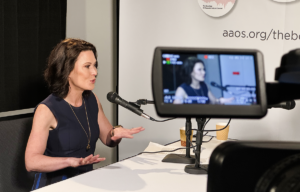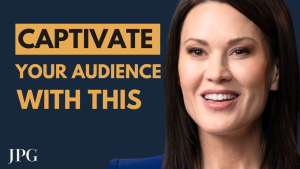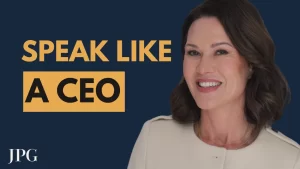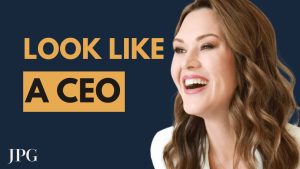People want to do business with people they know, like, and trust. But what do you do if you’re meeting someone for the first time and want to convince them to do something, such as hire you to speak or buy something else from you?
Those first few minutes are vital in making a solid first impression and earning their trust. The best way to do that? Communicate while quickly finding common ground.
Let me give you two examples I’ve recently used. They’re very different, though both connect to my business.
#1: Old Irving Park women’s business group on Zoom.
The goal of this Chicago neighborhood group is to connect local female business owners in our area. I didn’t join it to get new business for my company; I did it to support other local women-owned businesses in my community and hopefully make new friends within walking distance of my home.
When I introduce myself to this group during our meetings, I keep it to three easy things to remember and build trust:
- What I do in my company, but I focus on how I help business owners and female execs.
- My exact location. Since it’s a community group, that makes sense. Plus, my home is on the corner, recognizable to those who walk the neighborhood. It is distinct and helps people remember who I am.
- The age of my daughter. I include this to attract advice on schooling and other things I need to know from the moms who either just went through this age or are going through it currently.
#2: The Fortune 500 exec.
When I met with a prospect on Zoom last week, my elevator pitch was very different. He is an executive in his 50s who needs public speaking training. His company reached out because they saw him speak during their annual meeting, and he needs help before his next appearance. This is my forte. Every company expands my scope after witnessing the results from when I worked with the initial employee they hired me to help. Here’s how I tailored my introduction to this executive:
- Many of my past and current clients speak several languages. This person speaks four languages and the fact that he needs to present in his non-dominant language creates some confidence issues. I specifically chose to mention this so he knew I had experience and could successfully help him.
- I still needed to find a commonality to build trust. There wasn’t anything specific on his LinkedIn page, so I figured it out on the fly, using my journalism skills. As we spoke, I had a gut feeling he was a dad. So I asked him to share more about himself. It turned out he had three daughters–two professionals in Chicago and one in New York. I had found our commonality!
We had a warm conversation that included business and a little talk about family. He ended the conversation expressing he was hopeful about the chance for us to work together.
Think of it as personalizing your elevator pitch for the needs of your audience and aligning it with your goals.
An effective elevator pitch includes your skills and goals, of course, but more importantly, it should:
- Be tailored to your specific audience (you don’t just spit out the same speech each time you introduce yourself).
- Be brief. Restrict your speech to 30-60 seconds. It should last no longer than a short elevator ride, hence the name.
- Be positive. You could be talking about raising money for a rare genetic disease, but in the end, what is the good news? Can it be cured with the right help?
Landing a memorable elevator pitch gets easier with time. Practice by taking more opportunities to get in front of different groups with varying needs.
I hope to run into you on Zoom or in person soon and hear more about you.
You’ve got this!
P.S. Want more tips? Be sure to sign up for my LinkedIn newsletter where you’ll get exclusive tips on strengthening your mindset to become a better communicator. Click here to subscribe to Thought Leaders Amplified on LinkedIn.
P.P.S. I created a training program for healthcare professionals who need to discover their message and story, deliver it clearly, succinctly, and confidently, and present in a way that intrigues, entertains and keeps the audience’s attention. Share it with your friends in healthcare. Check it out even if you’re not in healthcare. The tips and tricks are universal. Click here to learn more.
P.P.P.S. Whenever you’re ready… here are three more ways I can help you build your brand, own your voice, and stand out:
- Want more tactical advice you can implement today? Check out my blog here for great articles, stories, and lessons I’ve shared over the years.
- Looking for one-on-one coaching or a consultation with me? Schedule a complimentary call here to speak to our team about how we can help you.
- Follow me on Instagram here for more media and public speaking tips, videos… and a little fun.





